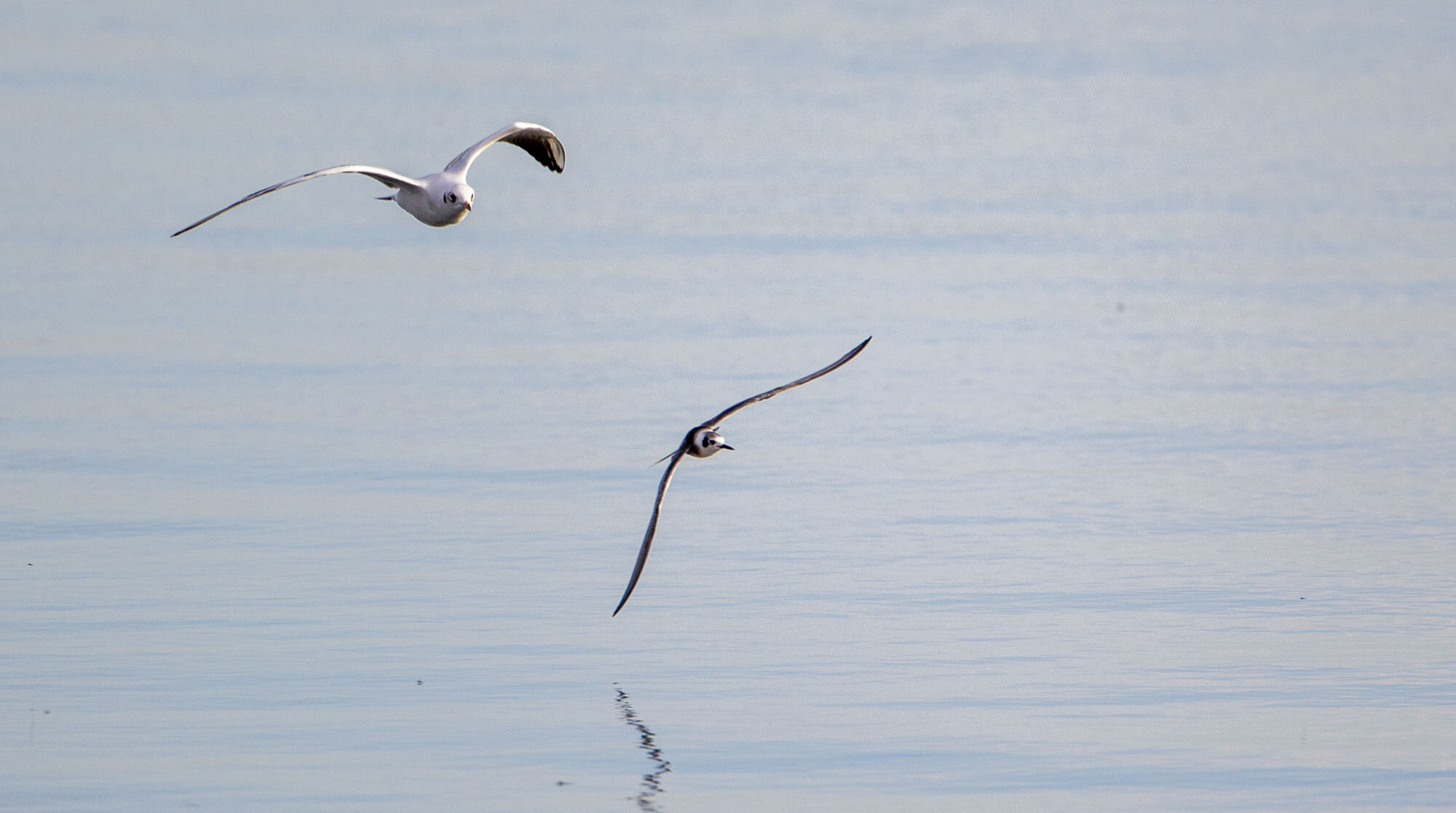American Black Tern Chlidonias niger surinamensis
Covenham Reservoir, Lincolnshire, September 2011 - the first record for Lincolnshire
On the morning of September 17th I decided to do a seawatch off Sandilands south of Mablethorpe in the hope of a lingering shearwater or skua; after four hours of very little I headed to Covenham Reservoir with no real hope of finding anything of note but the chance of a Sabine’s Gull or a nearctic wader meant it was worth a quick look. Upon arrival I was non too pleased to sea windsurfers speeding into the supposed wildfowl sanctuary area in the south-east corner putting all the wildfowl and grebes to flight. A scan revealed a juvenile Red-necked Grebe on the south side and as I took some photos of it the bird began calling frequently before flying west and joining a moulting adult. Both birds had striking amounts of yellow on both mandibles so with a vague recollection of North American Holboell’s Grebe having mostly yellow bills I tried to get some decent shots of the birds for future reference.
While squatted down waiting fr the grebes to drift closer in out of the corner of my eye I saw a small tern flick over the west bank of the reservoir from the landward side and drop onto the concrete wall. A quick look with the scope showed that it was a black tern but the head pattern looked rather white-winged like and the upperparts were quite dark. Two days previously I had been studying a juvenile Black Tern on my local patch but its gleaming white flanks and underwing coverts combined with the obviously paler rump quickly ruled out any real thoughts of American Black Tern but to make 100% sure I went home and dug out the October 2009 copy of Birding World with the article on the Farmoor American Black Tern. Study of the superb plate by Ian Lewington entrenched the requisite features for identification of this bird in my mind but I had certainly not expected to have been calling on my memory banks as quickly as two days later. Back at Covenham I closed the 500m gap on the perched tern only to see it flush as two people walked by but it soon landed again and I took several photos getting slightly closer without wanting to flush the bird. It seemed tired and with a strong westerly wind blowing I did not want to cause it any further distress by flushing it. The views on the deck seemed to state that as unlikely as it may have seemed this was indeed a juvenile American Black Tern in Lincolnshire!
The head pattern was striking with small black head-phone spots joined over the crown by a fine wash of dark grey streaks the forehead, chin and throat being bright white as was the lower nape. The upperparts were quite uniform grey but with an obviously darker brown toned mantle, which like the head pattern, resembled white-winged tern. The dusky spot on the breast sides was more diffuse than in Black Tern and clearly spread out and extended round the carpal on the closed wing and although difficult to see it seemed to go right down the flanks. From head-on the underpart pattern was striking. By now I was pretty certain that it was an American Black Tern but I was conscious of the need to see the underwing and hopefully get some photos showing the extent of the flank wash and the underwing coverts. At this point the bird suddenly got up and was caught by the strong wind drifting high to the east across the reservoir. My attempt at quick flight shots was rudimentary but as I dared to check the camera viewfinder the undersides revealed the hoped for pattern.
I rang round several Lincs birders but by this time I had lost the bird. Desperate scanning eventually revealed it perched on the bank at the opposite corner of the reservoir 1.2kms away; at this distance it looked incredibly small and head-on bore a resemblance to a Grey Phalarope. As the first birders arrived the windsurfers flushed the bird again but this time it looked more adept on the wing and seemed positively fit and healthy compared to my first views. As more people arrived the tern flew west out of the reservoir and settled on a newly ploughed field with Black-headed Gulls when its amazingly small size was stunning. There then followed a pattern of the bird resting and preening on the adjacent ploughed fields interspersed with bouts of feeding over the reservoir. On the 18th a warmer and sunny day on two occasions it flew at least 2kms high to the south-west following departing Black-headed Gulls but it eventually returned. The habit of resting on the ploughed fields was repeated on the 18th even when there were no gulls present and was something never seen on Black Terns on the reservoir in the past.
This was the 4th record of American Black Tern in Britain and obviously the first for Lincolnshire and the east coast.



















